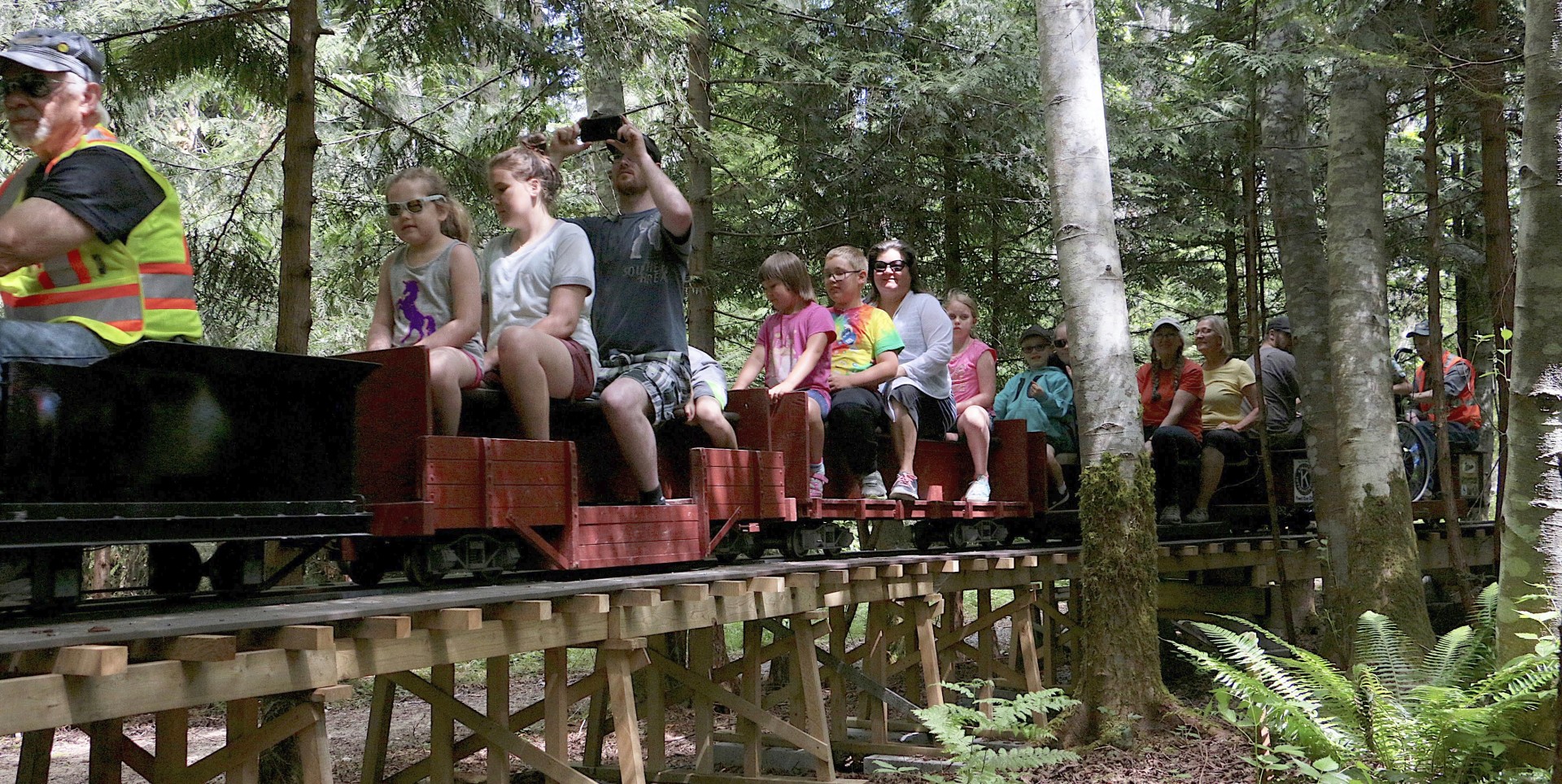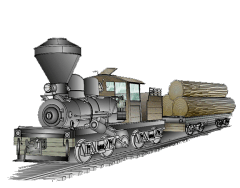
The Willingdon Beach Trail Steam Donkey Project retrieved a rusting steam donkey located on a ridge north of Haywire Bay, Powell Lake, and relocated the donkey to the Willingdon Beach Trail in Powell River in 2001 and 2002.

Before doing the project, our first question was: Should we do it? Is it fair to the hikers to remove it? But we decided that since a few other abandoned donkeys remain in the woods near Powell River for hikers to enjoy in their original setting, our project would ensure that many more Powell River citizens and visitors could enjoy this important artifact in a wheelchair-accessible location, and imagine how it might operate.

Rudi van Zwaaij, then President of the Forestry Museum Society, hiked into the area and found the donkey in July 1999. It was still strong enough to airlift but, if it were left to rust away in this hard-to-reach bush area, only a few hikers would see it before it finally collapsed. We realized that if we wanted to make one accessible to a larger public, we had better move soon.

The project team developed plans based on field trips in July 1999, Feb 2000 and May 6, 2000. The team then organized resources to retrieve and restore the donkey and dismantled the donkey into pieces that logging helicopters could lift. Volunteers restored and re-assembled the donkey during 2000 and 2001. This exhibit begins with a description of plans and field trips. Then you may view photos of the steam donkey as it lay on the ridge. Then we show the helicopter lift-out, making the skid, moving the skid to 2nd beach, assembly, and opening ceremonies. Finally, we have many people to thank for making this project happen.

Trip report by Rudi Van Zwaaij: Saturday, February 26, 2000.
Present on the field trip: Museum members: Brian Crilly, Richard Parker, Tom Oldale, Norm Evans, Les Shelton, Mike Clark, Rudi van Zwaaij. Steam donkey committee: Greg Voysey, Howie McKamey. Others: Kraig and Sandra Urbanoski, Suzanne Clark

“We left the Shingle mill at 9 am in two boats. After a short boat ride, we tied up at a cabin and started on the 45-minute hike on an old overgrown road. The weather cooperated and we had dry weather.“

“The steam donkey was an awesome sight and everybody was enthusiastic about the prospect of bringing it out of the woods this summer. A lot of photographs and some videos were taken. Discussion centred on how to get the donkey out. Greg and Howie are both involved in logging with helicopters and felt fairly comfortable that we could airlift the steam donkey in two or three turns.“

“The boiler would have to be lifted by itself, and the frame and drums last. For ease of handling, it would be preferable to fly straight to the A-frame. The research on the weight of the unit is still ongoing, but early indications are it to be in the 35,000-pound range without the wooden skids.“

“The next step is to finish the research on this Empire model and organize a work party to document and disassemble the parts for flying. A work party early in the year is preferred over later in regards to the fire season in the woods, as torches may have to be used to cut some of the bolts. Rudi will write a project description that can be sent to potential companies that may be interested in helping with the project. Greg will contact helicopter logging companies.“

“We talked about the painting of the steam donkey. Some felt it would be much nicer to leave it in its natural state. Brian suggested sandblasting and clear coat the metal to give it some protection. Brian will check if Pacifica has a warehouse where we can do this work.“

“The roof structure is another thing to consider. Building a new roof structure is probably a good thing to protect the steam donkey. However, we need to take into consideration the likelihood of vandalism and have to build something that is somewhat vandal-proof and possibly sacrifice some of the authenticity of the current roof structure. Documentation of the existing roof structure still needs to take place. The current structure is rotten and is not worth saving.“
Information collected on the steam donkey:
- Empire MFG. Co. Ltd. Vancouver
- Shop Number: Empire No. 357
- No of drums: 3
- Boiler diameter: 6 feet (approx. 190 cm)
- Boiler height to the upper rivets: 10 feet
- Boiler overall height with chimney is 7.0m
- Metal frame: Length: 16 feet
- Outside Width: 6½ feet
- Overall width including outside cylinder: 9 feet
- Cylinder size: 10 x 16
- Wooden skids: length: 16.6m (54 feet)
- Width: 3.4m (11 feet)
- Diameter: 1-1.2m (3½ feet)
- Wood: Douglas Fir (still fairly sound in places)
- Roof structure: wood frame with tin roofing

Rudi suggested leaving a plaque at the site after we remove the steam donkey. Maybe a brass plaque that can be bolted to the adjacent rock bluff. We need to consider if this is worthwhile and decide on the writing.
The party returned safely at the Shingle mill at noon. The steam donkey committee decided to meet later in March to discuss the next steps of the project. We thank Goat Lake Forest Products and Weyerhaeuser for supplying the boats for the trip.
Rudi van Zwaaij, President
PS. Thanks, Sandra for the great photographs!

